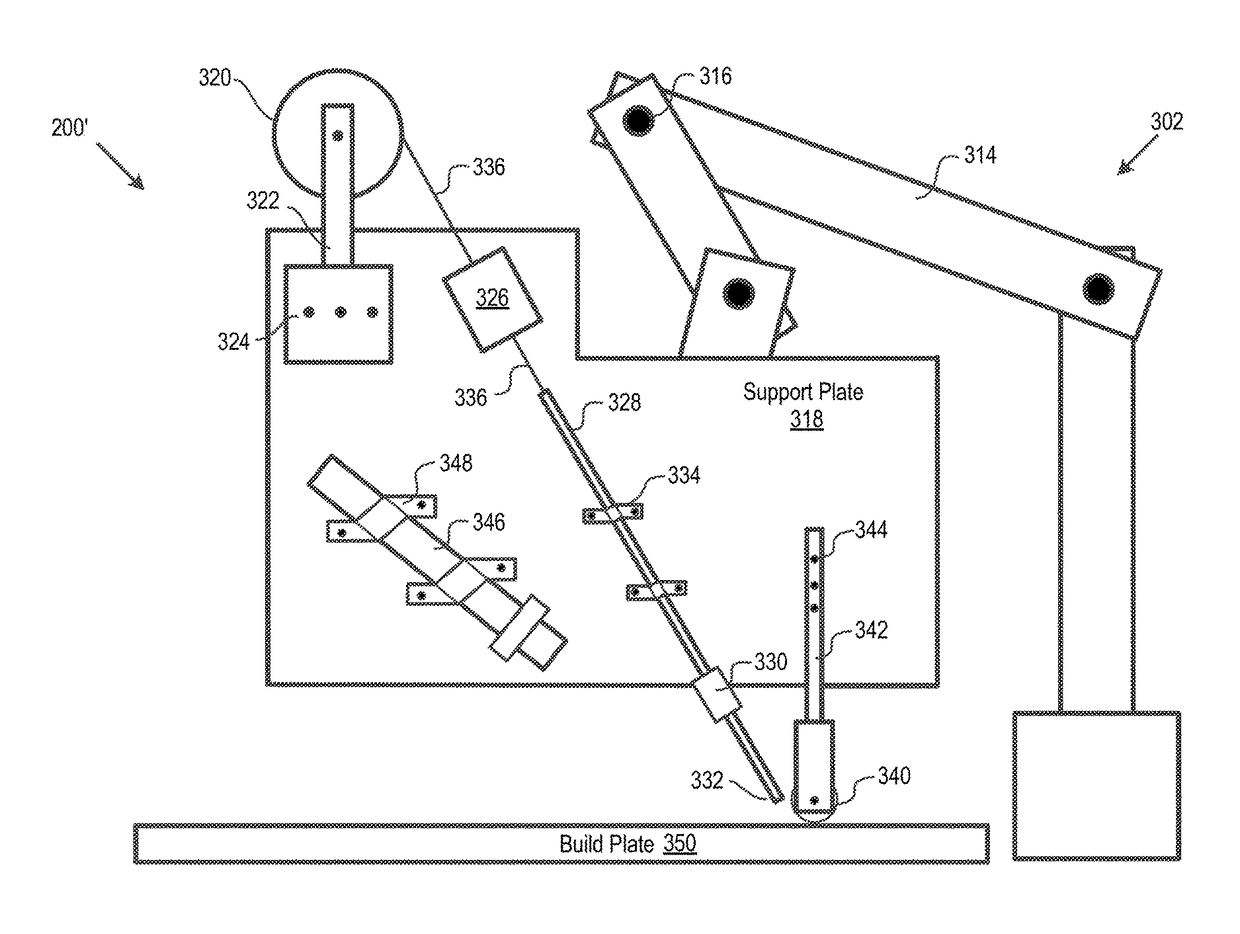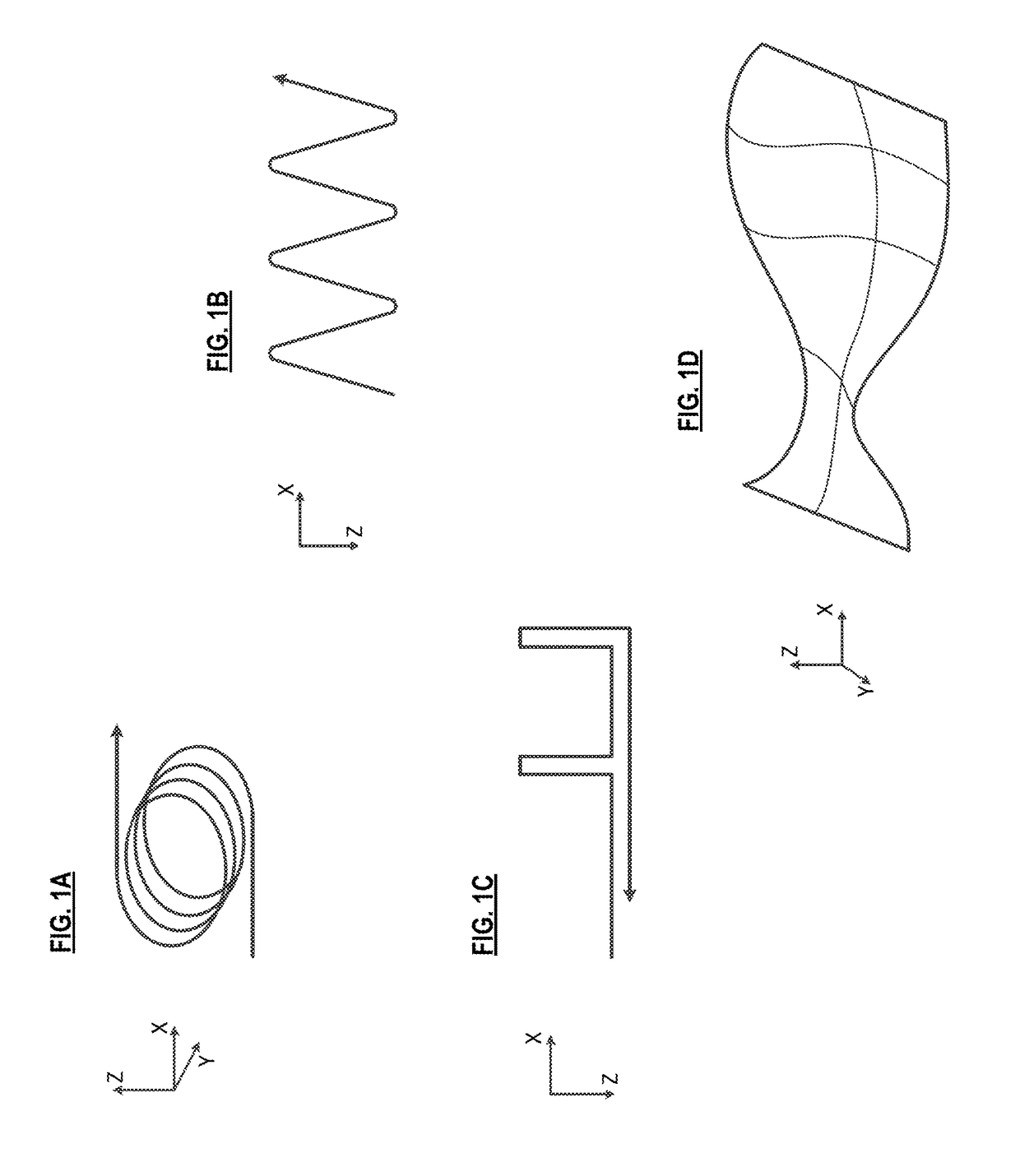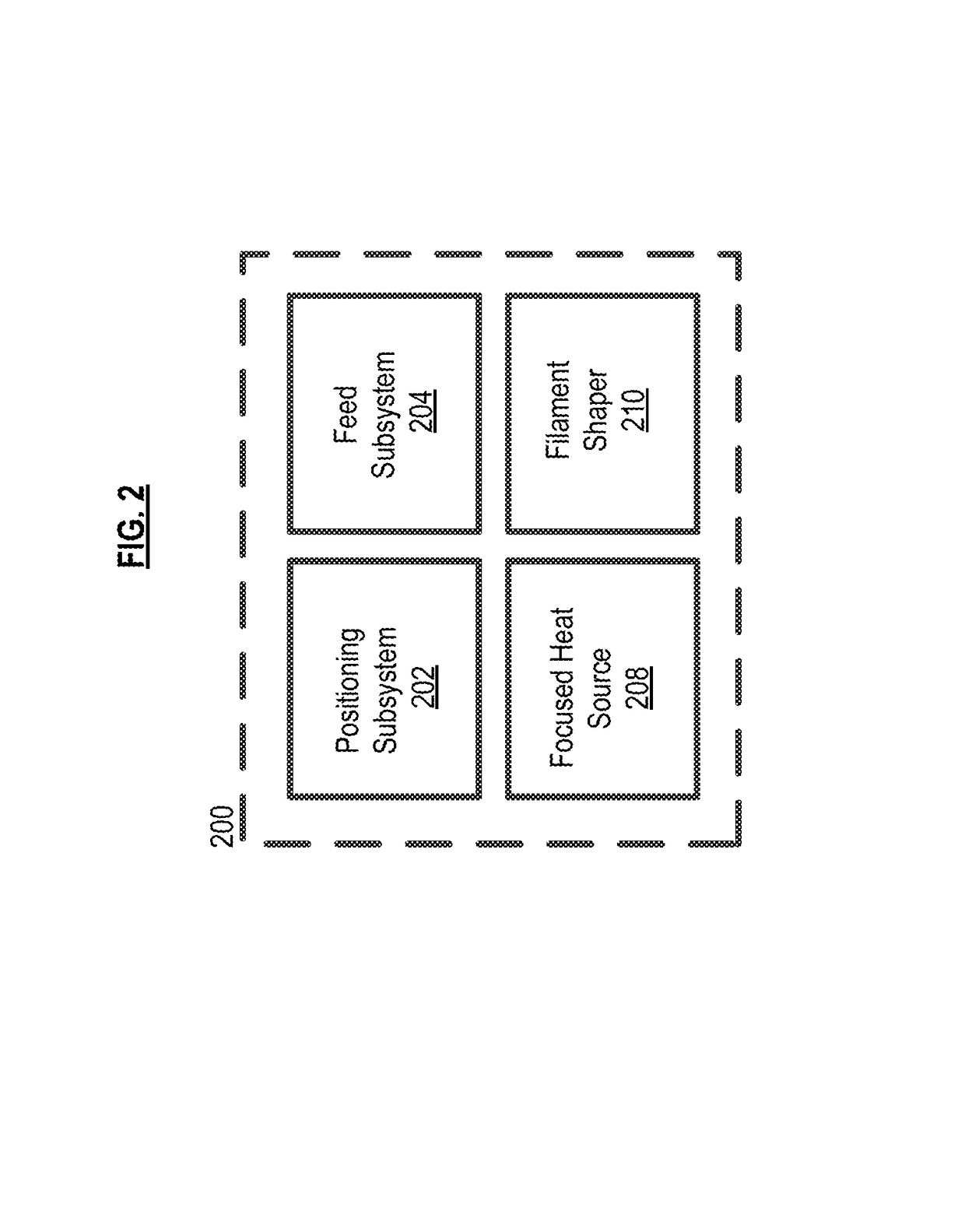Method for additive manufacturing using filament shaping
a technology of additive manufacturing and filament, applied in the direction of additive manufacturing process, manufacturing tools, manufacturing data acquisition/processing, etc., can solve the problems of ineffective stress transfer from the resin matrix to the fibers, premature failure of the part via crack propagation, void space or bubble between the fiber and the resin, etc., to improve heat transfer and bonding, improve inter-laminar strength, and improve the effect of bonding
- Summary
- Abstract
- Description
- Claims
- Application Information
AI Technical Summary
Benefits of technology
Problems solved by technology
Method used
Image
Examples
Embodiment Construction
[0029]FIG. 2 depicts the salient functional elements of deposition system 200 in accordance with the present invention. Included in system 200 are positioning subsystem 202, feed subsystem 204, focused heat source 206, and shaper 210.
[0030]In the illustrative embodiment, positioning subsystem 202 comprises a multi-axis end effector (e.g., robotic arm, etc.). In the illustrative embodiment, the multi-axis end effector has sufficient degrees of freedom (i.e., six DOF) to enable true three-dimensional printing. That is, the positioning subsystem is capable of delivering a feed filament to an arbitrary location in space, as specified in accordance with the build instructions. This enables system 200 to print along the natural loading contours of an part. Printing with such a multi-axis end effector is described, for example, in Ser. No. 14 / 184,010, previously referenced and incorporated by reference herein.
[0031]In some other embodiments, positioning subsystem 202 comprises a gantry hav...
PUM
| Property | Measurement | Unit |
|---|---|---|
| operating temperatures | aaaaa | aaaaa |
| aspect ratio | aaaaa | aaaaa |
| aspect ratio | aaaaa | aaaaa |
Abstract
Description
Claims
Application Information
 Login to View More
Login to View More - R&D
- Intellectual Property
- Life Sciences
- Materials
- Tech Scout
- Unparalleled Data Quality
- Higher Quality Content
- 60% Fewer Hallucinations
Browse by: Latest US Patents, China's latest patents, Technical Efficacy Thesaurus, Application Domain, Technology Topic, Popular Technical Reports.
© 2025 PatSnap. All rights reserved.Legal|Privacy policy|Modern Slavery Act Transparency Statement|Sitemap|About US| Contact US: help@patsnap.com



